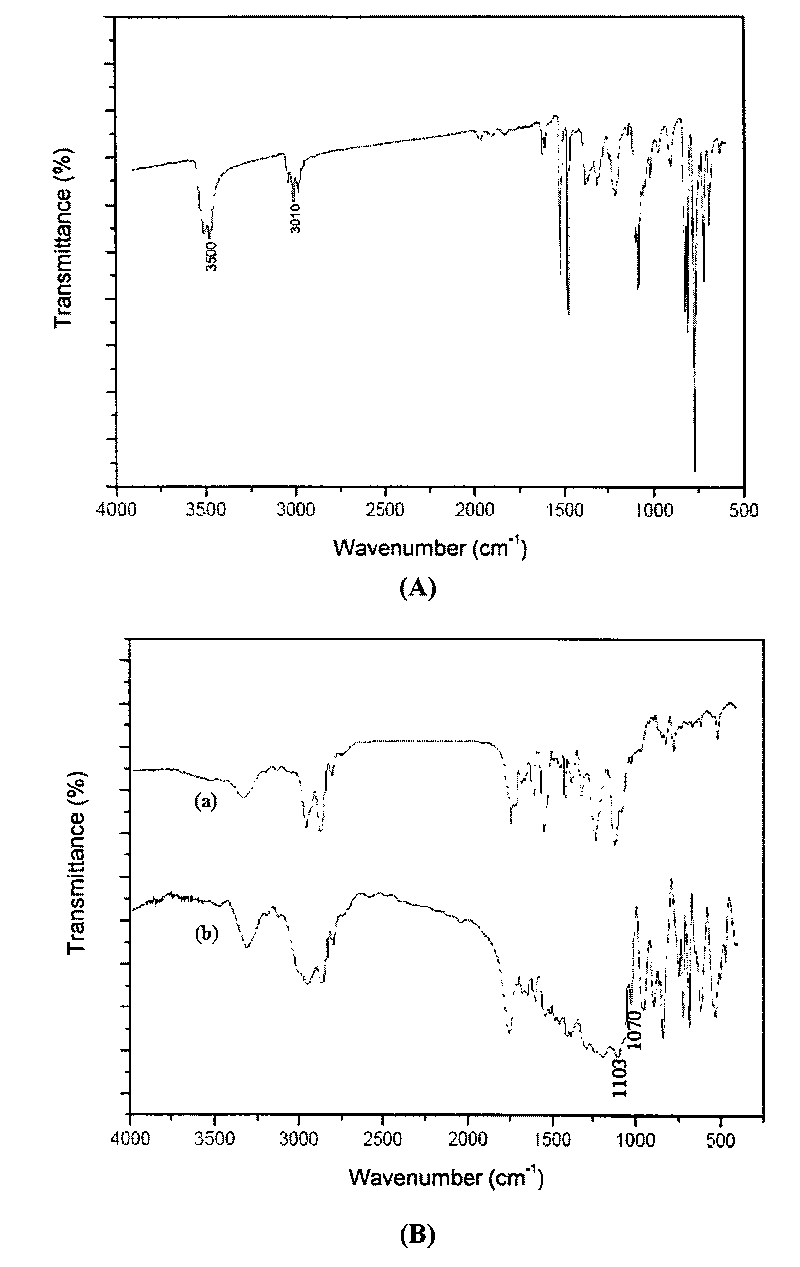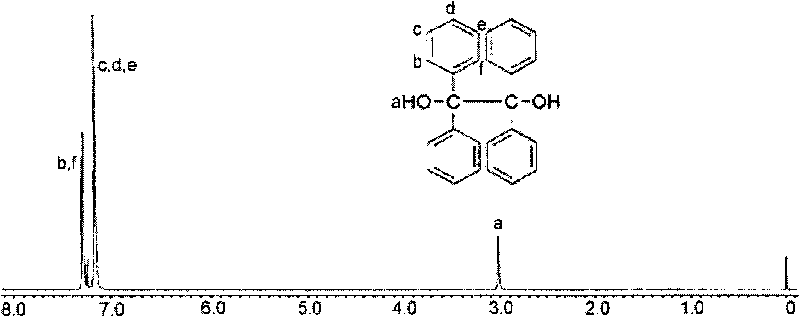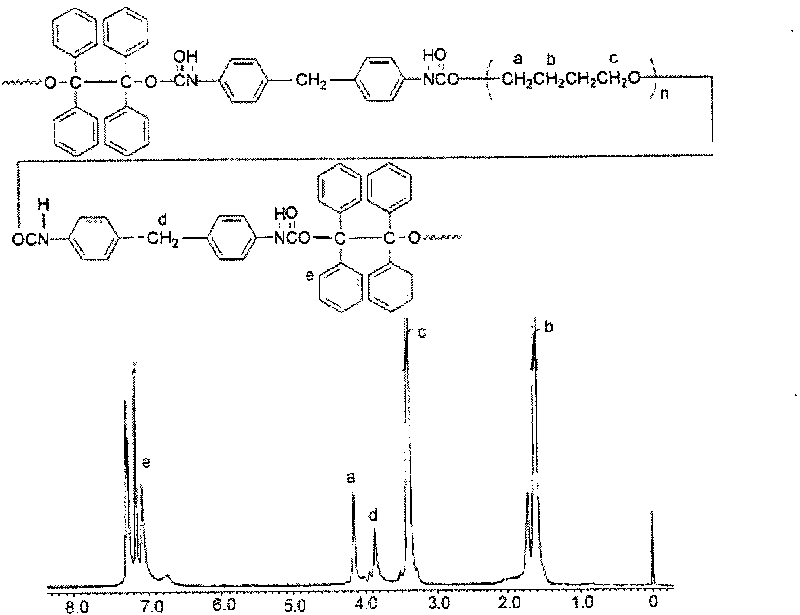Fluorinated polyurethane and preparation method thereof
A technology of fluorinated polyurethane and polyurethane, which is applied in the field of fluorinated polyurethane and its preparation, can solve the problems of poor flexibility, poor solubility, and low molecular weight of fluorinated polyurethane, and achieve the effects of easy realization, good mechanical properties, and simple preparation method
- Summary
- Abstract
- Description
- Claims
- Application Information
AI Technical Summary
Problems solved by technology
Method used
Image
Examples
preparation example Construction
[0027] The method for preparing the above-mentioned fluorinated polyurethane proposed by the present invention, the raw materials used in the method include: benzophenone I, isopropanol II, polymer diol III, diisocyanate IV, hexafluorobutyl acrylate V and methacrylic acid Hexafluorobutyl ester VI, the structural expression of each raw material is:
[0028]
[0029]
[0030] The method for preparing the above-mentioned fluorinated polyurethane includes the following steps:
[0031] (1) First, mix 0.05-10 mol of raw material benzophenone I and 0.25-50 mol of isopropanol II, and then add 0.01-0.2% of the first catalyst of the total amount of raw materials I and II. Reaction under ultraviolet light at temperature to obtain 1,1,2,2-tetraphenylethylene glycol product, and then recrystallization and purification by adding 10-200 times acetic acid of the product, the reaction expression is:
[0032]
[0033] (2) Mix 0.01~10mol polymer diol III and 0.03~20mol diisocyanate IV into the solvent...
Embodiment 1
[0039] Step 1: First mix benzophenone (0.1mol) and isopropanol (0.5mol), and then add acetic acid (0.005mol). The mixture is put into a 500mL round-bottomed flask and exposed to a temperature of 25℃. Under 365nm ultraviolet light, the product (1,1,2,2-tetraphenylethylene glycol) was precipitated, and the precipitated product was purified by recrystallization from acetic acid.
[0040] NMR of the pure product 1 H-NMR(CDCl 3 ): δ=3.05 (hydroxyl, 2H), 7.00-7.50 (phenyl, 20H) (see attached figure 2 ). Infrared spectrum IR: 3500-3550cm -1 (Hydroxy), 3010cm -1 (Phenyl) (see attached figure 1 A).
[0041] Step 2: Mix polytetrahydrofuran ether glycol (0.01mol) and 4,4'-diphenylmethane diisocyanate (0.02mol) into 50-100mL tetrahydrofuran, the mixture is charged into a 500mL three-necked round bottom flask, nitrogen Under protection, stir and mix and react for 3 hours at 60~85℃ to obtain a prepolymer; the temperature is reduced to 35℃, and 1,1,2,2-tetraphenylglycol (0.01mol) is added, and ...
Embodiment 2
[0046] Step 1: First mix benzophenone (0.1mol) and 2-propanol (0.5mol), then add glacial acetic acid (0.005mol), the mixture is charged into a 500mL round-bottomed flask, at a temperature of 30℃ After exposure to 365nm ultraviolet light, the product (1,1,2,2-tetraphenylethylene glycol) was precipitated, and the precipitated product was purified by recrystallization from acetic acid.
[0047] Step 2: Mix polycarbonate 1,4-butanediol ester diol (0.01mol) and 2,6-toluene diisocyanate (0.02mol) into 100mL methyl ethyl ketone, and the mixture is charged into a 500mL three-necked round bottom flask , Under the protection of nitrogen, the mixture was stirred and reacted at 85°C for 3h to obtain a prepolymer; the temperature was reduced to 35°C, and 1,1,2,2-tetraphenylethylene glycol (0.01mol) was added. The molar ratio of the addition was 1 , 1,2,2-tetraphenylethylene glycol: diisocyanate = 1:2, then add 0.03% of stannous octoate based on the total weight of the reactants, stir and reac...
PUM
 Login to View More
Login to View More Abstract
Description
Claims
Application Information
 Login to View More
Login to View More - R&D
- Intellectual Property
- Life Sciences
- Materials
- Tech Scout
- Unparalleled Data Quality
- Higher Quality Content
- 60% Fewer Hallucinations
Browse by: Latest US Patents, China's latest patents, Technical Efficacy Thesaurus, Application Domain, Technology Topic, Popular Technical Reports.
© 2025 PatSnap. All rights reserved.Legal|Privacy policy|Modern Slavery Act Transparency Statement|Sitemap|About US| Contact US: help@patsnap.com



